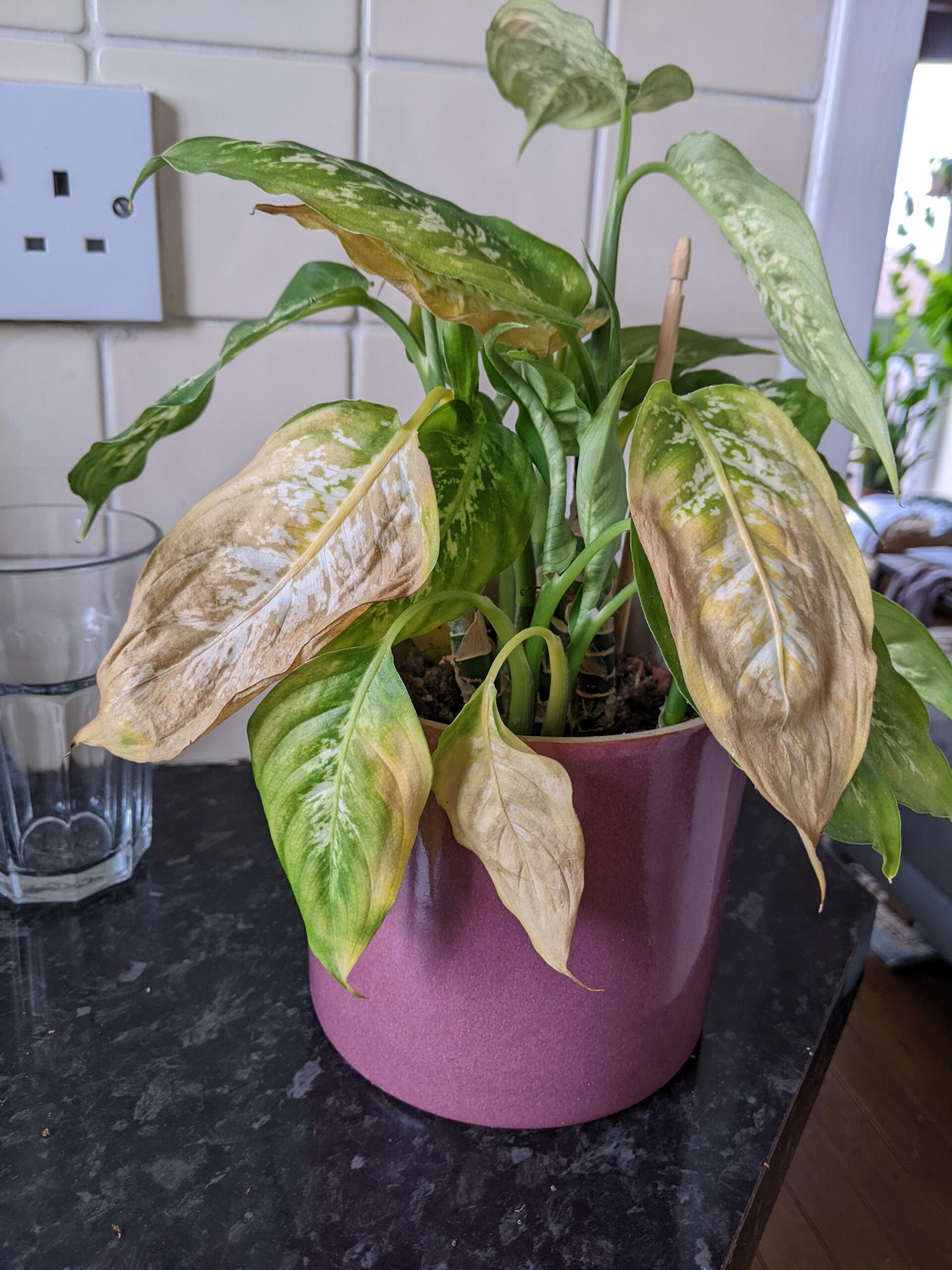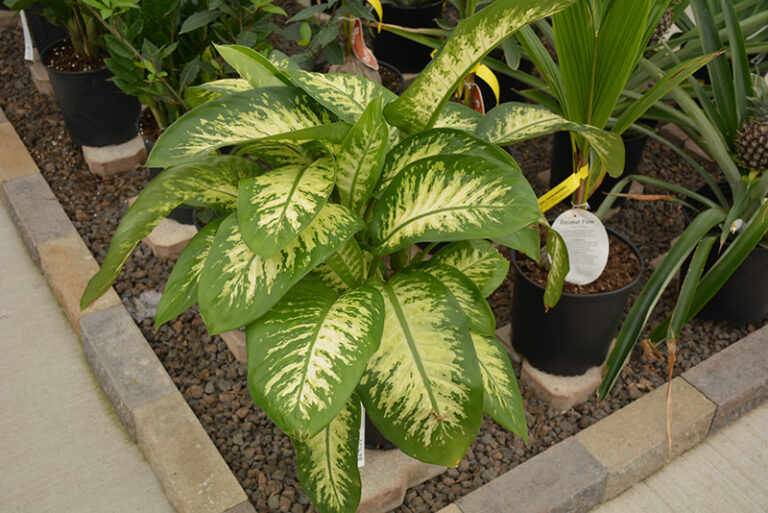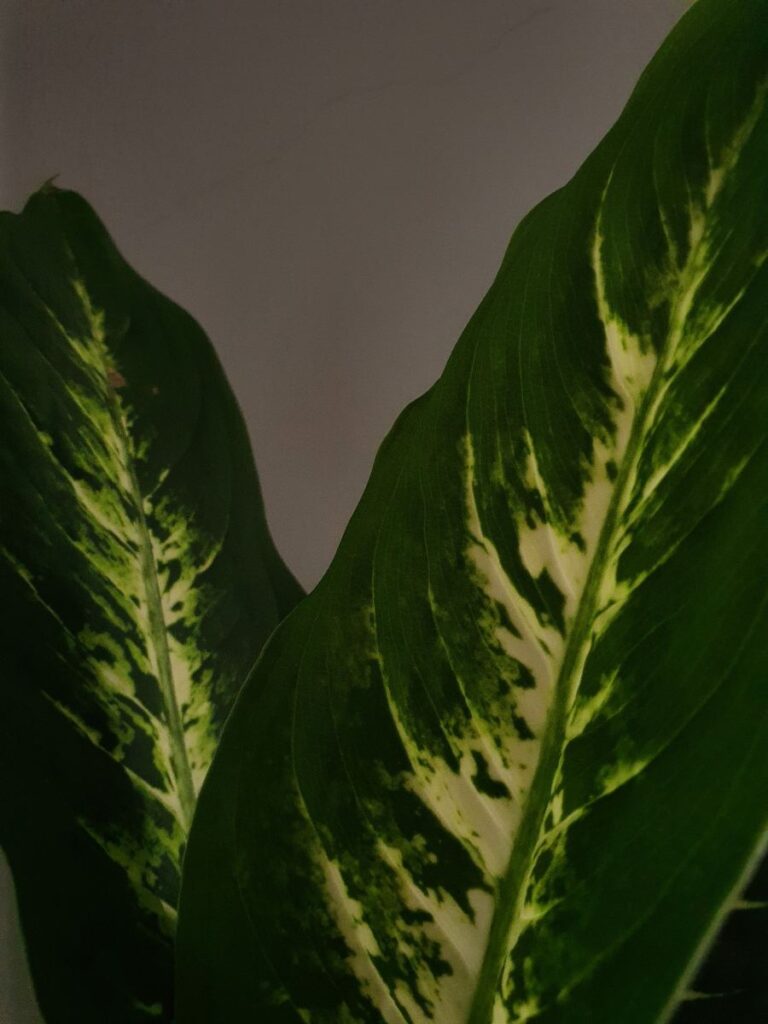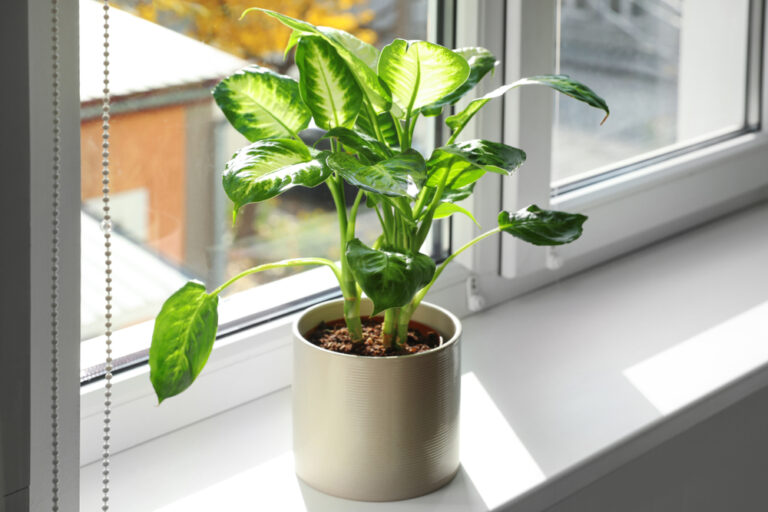Growing Dieffenbachia Indoors
Light Requirements
Dieffenbachia thrives on consistent light exposure, preferring bright, indirect light for about 8-12 hours daily, mimicking its natural habitat under the forest canopy. Drastic changes in light conditions can stress the plant and lead to poor growth or leaf loss. For in-depth details, explore dieffenbachia light requirements.
| Light Type | Hours per Day |
|---|---|
| Bright, Indirect Light | 8-12 |
Rotating for Even Growth
To ensure even growth, it is recommended to rotate Dieffenbachia every few months so that each side receives its share of light. If the plant starts reaching towards the light, it’s an indication that it needs to be turned.
Using Grow Lights
In cases where natural light is insufficient, using grow lights can be beneficial. LEDs are preferred for their energy efficiency and available spectrum varieties. Positioning grow lights 12 to 24 inches above the plant and providing 12 to 14 hours of light per day can help supplement its light needs.
| Grow Light Type | Height Above Plant | Light Hours per Day |
|---|---|---|
| LED | 12-24 inches | 12-14 |
For those with limited natural light, consider reading more about using grow lights for indoor plants. This comprehensive approach will keep your Dieffenbachia thriving, even in low light conditions.
Watering and Temperature Tips
When cultivating Dieffenbachia, proper watering and temperature management are essential to ensure the plant thrives, especially in low light conditions.
Watering Schedule
Dieffenbachia requires consistent moisture to stay healthy. The plant prefers soil that is moderately moist but not waterlogged. Here are some guidelines for watering:
- During the Growing Season (Spring and Summer): Water the plant when the top 1-2 inches of soil feel dry to the touch, which may be around twice a week for larger plants (The Spruce).
- During the Dormant Season (Fall and Winter): Reduce watering frequency and ensure the top of the soil is fully dried out before watering again to prevent root rot.
| Season | Watering Frequency | Soil Condition |
|---|---|---|
| Spring and Summer | Twice a week | Top 1-2 inches dry |
| Fall and Winter | Reduce watering | Soil fully dry at the top |
It’s important to avoid overwatering, as Dieffenbachia cannot tolerate constant waterlogging. For more information on watering practices, visit dieffenbachia watering.
Ideal Temperature Range
Dieffenbachia thrives in warm conditions:
- Optimal Temperature Range: 65 to 75°F (The Spruce).
- Temperatures Below 60°F: Can cause lower leaf loss and a palm-like appearance.
Maintaining these temperatures helps prevent stress on the plant. Dieffenbachia should be kept away from cold drafts, which can cause yellowing and leaf drop. For more tips on maintaining the ideal conditions, explore dieffenbachia light requirements.
Importance of Humidity
Humidity plays a crucial role in the health of Dieffenbachia. The plant appreciates a relatively moist atmosphere to promote vigorous growth:
- High Humidity: Beneficial to maintain large, healthy leaves.
- Methods to Increase Humidity:
- Grouping plants together.
- Using a pebble tray filled with water.
- Avoid placing the plant near direct air vents to prevent dry conditions and susceptibility to spider mites.
For comprehensive care tips on maintaining optimal humidity, refer to dieffenbachia plant care.
By following these watering and temperature tips, gardeners can ensure their Dieffenbachia thrives even in low light conditions.
Maintenance and Care
Repotting Needs
Repotting dieffenbachia plants annually may be necessary when signs of stress, such as roots poking out, crowding, or falling leaves, are observed. After repotting, it is recommended to allow the plant some time to adjust to its new setting. Additionally, dieffenbachia should be kept away from contact with the sap when handling. For detailed steps and tips, refer to our guide on dieffenbachia repotting.
Addressing Common Issues
Yellow leaves in dieffenbachia can be caused by over or underwatering. Proper humidity levels, watering thoroughly, and maintaining humidity around 50% can help the plant use soil moisture efficiently. Yellowing leaves can also be a result of low room temperatures, so keeping indoor temperatures at 65-75°F during the daytime and no colder than 60°F at night is recommended.
| Common Issue | Possible Cause | Suggested Solution |
|---|---|---|
| Yellow Leaves | Overwatering, Underwatering | Adjust watering schedule, maintain humidity |
| Brown Tips | Low Humidity | Increase humidity |
| Drooping | Underwatering | Water thoroughly |
Overwatered dieffenbachia plants may exhibit yellow leaves that fall off, along with a slimy residue near the base. Further guidance on addressing such concerns can be found in our sections on dieffenbachia yellow leaves and dieffenbachia root rot.
Handling Toxicity Concerns
The dieffenbachia plant is not ideal for spaces with small children or pets due to its toxic sap, which can cause irritation when ingested. However, with caution, it poses no significant threat. It thrives in bright ambient light, but direct sun can scorch the leaves. Fluorescent lighting in an office space can also be suitable for this plant, with successful adaptation over time.
For specific details on handling toxicity and ensuring safety, refer to our article on is dieffenbachia poisonous.
By understanding these maintenance and care tips, gardeners can ensure their dieffenbachia plants flourish in low light conditions.
Plant Varieties and Growth Conditions
Different Dieffenbachia Varieties
Dieffenbachia, a popular houseplant, comes in numerous varieties, each with unique features and growth requirements. Some of the most common varieties include:
- Dieffenbachia Perfection Compacta: Known for its compact growth and attractive variegated leaves.
- Dieffenbachia Camille: Distinguished by its cream-colored leaves with green edges.
- Dieffenbachia Sparkles: Features dark green leaves with light green spots.
- Dieffenbachia Tropic Snow: Characterized by its large, lush leaves with creamy white patterns.
These varieties not only add aesthetic value to your home but also have different light and care needs. For more details on specific varieties, visit our page on dieffenbachia varieties.
Managing Growth with Pruning
Pruning is essential for maintaining the health and appearance of Dieffenbachia. Effective methods include:
- Air Layering: A technique where a section of the stem is wounded, covered with moist sphagnum moss, and then wrapped in plastic until roots develop.
- Topping: Cutting the plant at a desired height and planting the top section, which should root. This helps in controlling the height and promoting bushier growth.
For a step-by-step guide on pruning techniques, see our article on dieffenbachia propagation.
Suitable Light Conditions
Dieffenbachia plants are quite versatile when it comes to light conditions. However, understanding their light needs can help them thrive:
- Low Light Tolerance: Dieffenbachia can tolerate low light, making them ideal for indoor settings with limited natural light.
- Bright, Filtered Light: While they can survive in low light, they thrive best in bright, filtered light which helps maintain their vibrant variegation.
- Avoid Direct Sunlight: Direct sunlight can scorch the leaves, so it’s crucial to place them in a location with indirect light.
If your Dieffenbachia isn’t growing well, consider adjusting its light conditions. For more information on their light needs, check out our page on dieffenbachia light requirements.
By understanding the different varieties, effective pruning techniques, and suitable light conditions, you can ensure your Dieffenbachia plant grows healthily and enhances your indoor space. For more in-depth care tips and guidance, visit our dieffenbachia plant care page.




